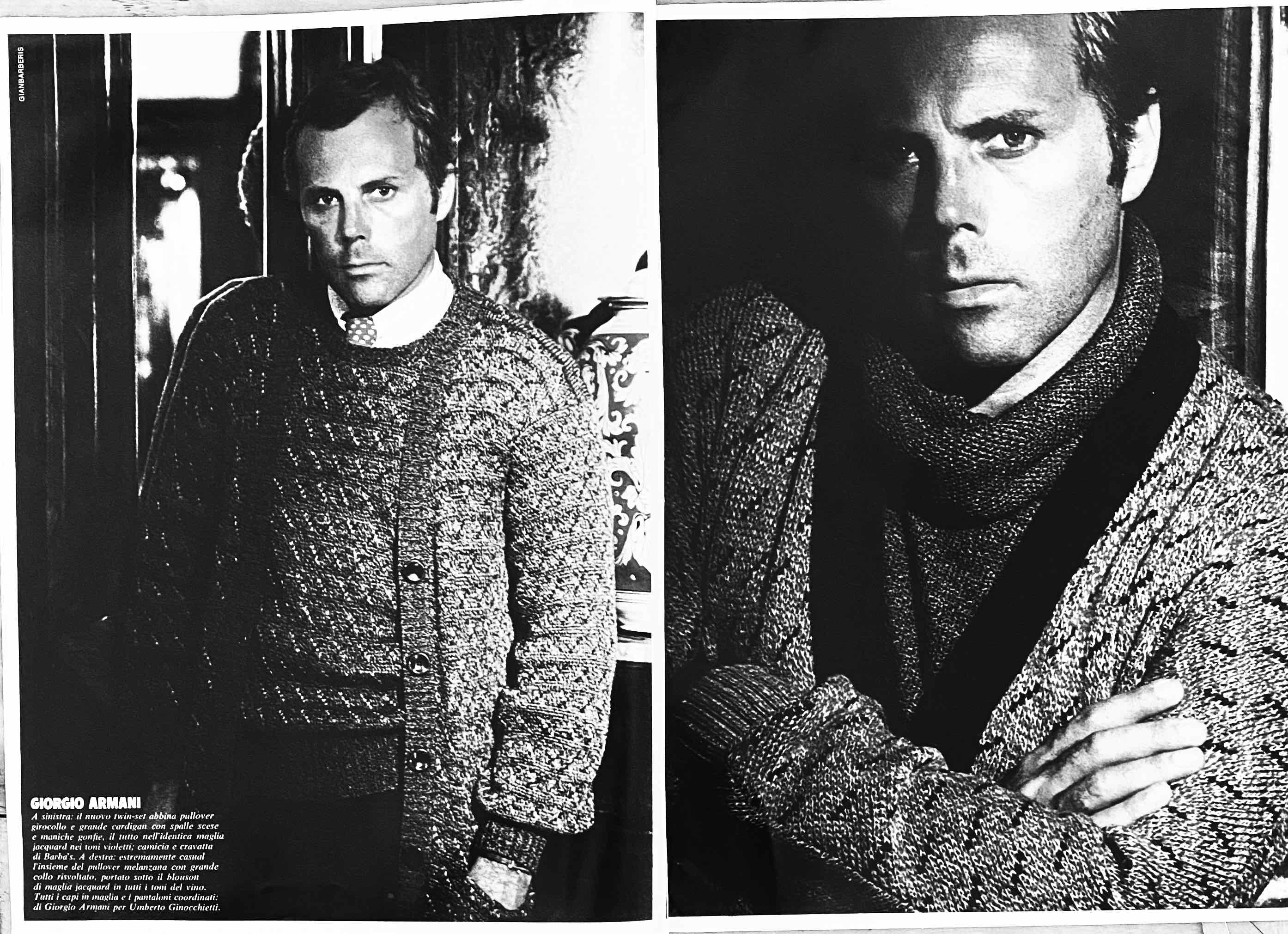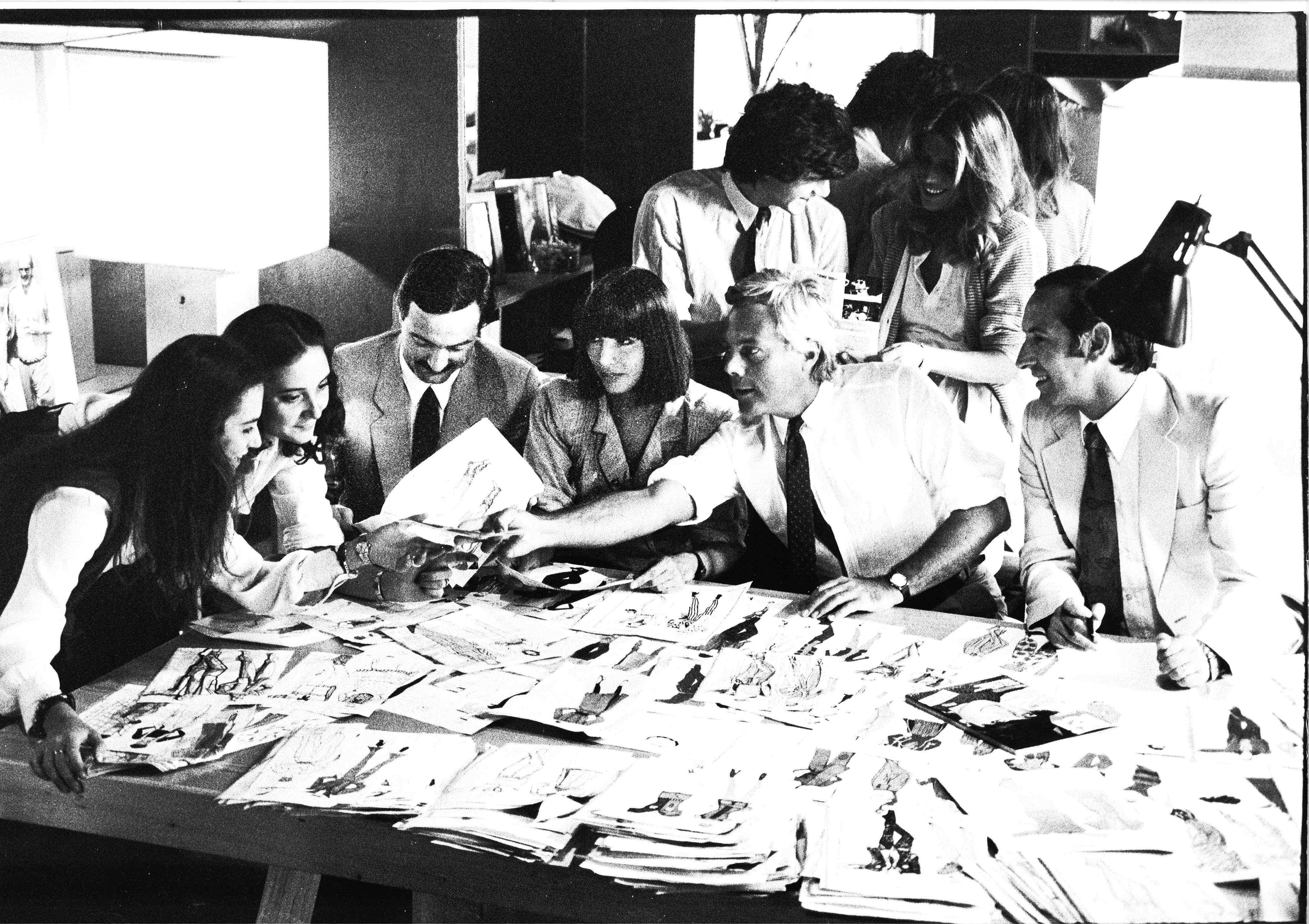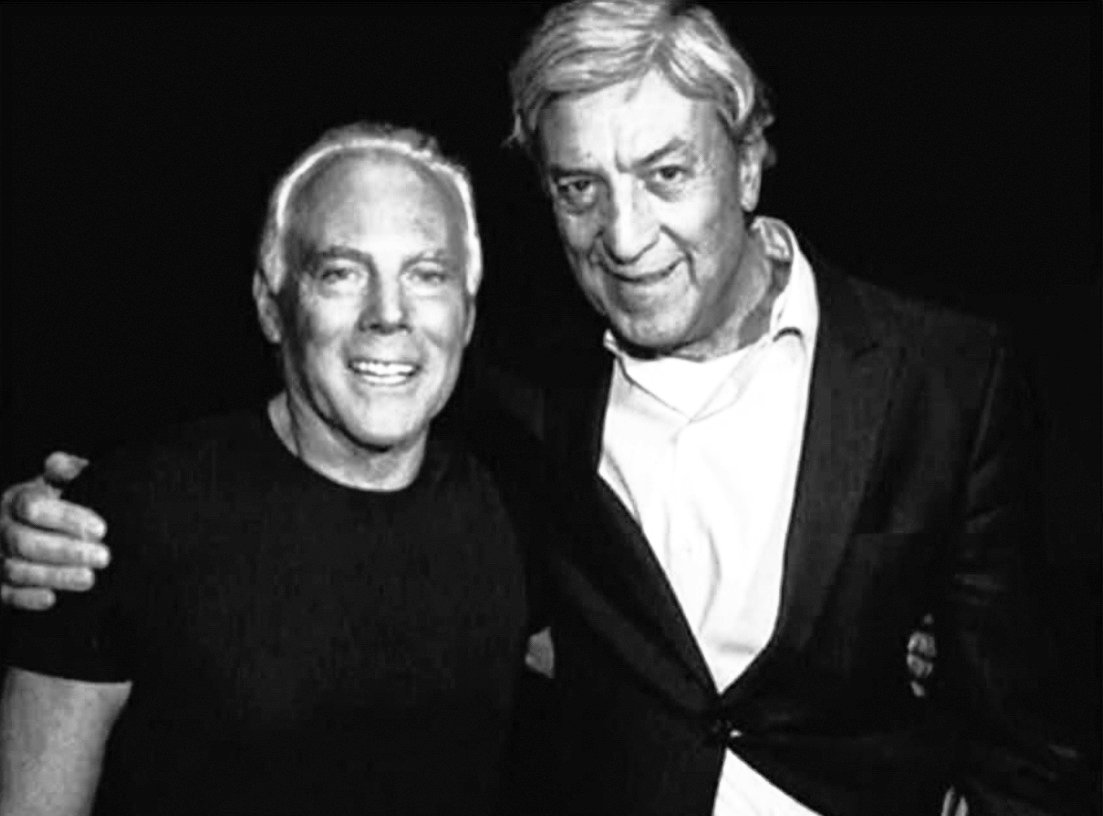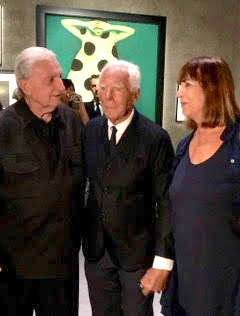Two testimonies from those who knew him well. Giorgio Armani began his career as a fashion designer towards the end of the 1960s as assistant to Nino Cerruti and founded his own line in 1975 with the help of art director Flavio Lucchini, who launched him in his influential magazine L’Uomo Vogue. Gisella Borioli was Lucchini’s assistant and followed Giorgio’s first steps in the world of men’s and women’s fashion, working with him on his first photo shoots and interviews.
Three friends whose lives often crossed paths, even when Armani chose via Bergognone as the location for his Teatro and his Museum, right in the area between Superstudio 13 and Superstudio Più. In their autobiographies, Flavio and Gisella recall how young Armani became King.
THE BEGINNING WAS BORN FROM A QUARREL
When I met Giorgio Armani, he was an employee of the Lanificio Fratelli Cerruti. Hitman, the new factory designed by architect Vico Magistretti on the edge of Milan, in addition to producing the garments signed by Nino Cerruti, also produced its own line. At the head of Hitman was Pinotto Marelli. The young Giorgio Armani, after his experience as a buyer at Rinascente and immediately showing his talent, was in charge for Cerruti and Hitman of the men’s lines, the shoes produced by Fratelli Rossetti in Parabiago for them, the fabrics and everything else. The fashion shows of these collections were the most awaited and the ones that set the real novelties in men’s fashion. Everyone knew who was behind Hitman and how good he was.
When Armani’s relationship with Pinotto Marelli and Nino Cerruti went into crisis, Giorgio and Sergio Galeotti, his partner and later business associate, came to me at Vogue to tell me they could no longer stand Hitman and to ask me for advice. I was already aware of the situation. There was only one way out: since he was so well known and appreciated by insiders, perhaps the time had come for Giorgio to go out on his own, under his own name. Sergio was immediately enthusiastic about the idea, Giorgio more hesitant.
Worried, they asked me:
— But where do we get the money?
And I reassured them:
— You don’t need it now. Giorgio, you do six pages of advertising without images in L’Uomo Vogue announcing that in February you will launch in Milan with your men’s line.
— But how do we pay for the six pages?
— No problem. Fontanesi and I will give you credit. You’ll pay when you can.
— But I don’t have the brand logo!
— I’ll take care of it.
On the spot, with Bodoni, Vogue’s original typeface, I manually composed the Giorgio Armani logo that he still uses today.
— But I don’t have the collection.
— It doesn’t matter. Design it, and then you’ll produce it.
— And for the fabrics?
— With the six-page announcement in L’Uomo Vogue, fabric makers will line up to give them to you.
It was October 1974. L’Uomo Vogue came out with six advertising pages announcing the new label and an editorial illustrated with drawings specially made by Armani and a presentation by Gisella. Giorgio immediately set to work on the real collection. In February, the first presentation of the line that bore his name took place in Corso Venezia, and it was a great success. The new, deconstructed man he proposed upset all the rules, while remaining elegant. It was what people were waiting for. Knowing Giorgio’s exceptional value as both a man and a designer, I had no doubts about the outcome of the venture. Shortly afterwards came the women’s collection, another success. His passion for fashion has taken him to unpredictable heights. For me as well. (from IL DESTINO, by Flavio Lucchini)
50 YEARS OF SUCCESS
Giorgio Armani was still a nobody. When I met him for the first time, I had gone to Hitman, a well-known men’s clothing company that produced Nino Cerruti’s suits and other minor lines, to select garments for a fashion feature.
Giorgio was young, polite, good-looking, with a curious little upturned nose I envied. But he was just an assistant. Right-hand man in Milan to Nino Cerruti, transplanted to Paris, and to Pinotto Marelli, his university companion and now CEO of Hitman, the company that produced both Hitman and Nino Cerruti clothing.
They spoke highly of him. But they couldn’t imagine how much.
Flavio, on the other hand, had immediately understood that this boy from Piacenza, a would-be doctor, former window dresser at Rinascente, was made of special stuff.
Even more so believed Sergio Galeotti, Giorgio’s great friend, with shaved head and cheeky little mustache, passionate and instinctive, life companion and partner in adventure, who wanted to encourage him to fly with his own wings. Sergio was certain of it, Giorgio seemed hesitant. After a quarrel with Nino, they asked Lucchini for an appointment. Sergio felt that the time had come for Giorgio to take off on his own.
To the two of them, Flavio, art director of the most authoritative men’s fashion magazine, offered his help. The Giorgio Armani brand was ready to exist. The first necessary thing was to have a recognizable logo that in its lettering embodied all the qualities and characteristics of the product.
— “I’ll do it for you now” — and Flavio himself that very evening composed, in Bodoni, that is, with Vogue’s elegant characters, letter by letter, the Giorgio Armani brand as everyone still knows it today.
He proposed, “sold” and organized for him a “groupage” of advertising pages illustrated with only the brand and, on each page, the announcement of the product Giorgio would design: Giorgio Armani suits, Giorgio Armani ties, Giorgio Armani shirts, Giorgio Armani accessories. A campaign of six double pages to be published in the next issue of L’Uomo Vogue, to be paid for later...
He called me. Now the editorial part was missing. It was my turn.
I had to write about his vocation and his new line — that it was non-existent was just a detail — Giorgio Armani. And I had to do it well! Four full pages, illustrated with his sketches.
The first Giorgio Armani men’s fashion show was in Milan, and it was a shock. It was added to the more classic ones - Brioni, Piattelli, Palazzi - well-known Roman tailors who paraded in the capital as was the case for Italian Haute Couture. Hastily put together by Giorgio with the complicity of his friend Galeotti, in the presence of the few fashion journalists of the time, it immediately revealed his ability to sense which way the wind was blowing, to grasp the changes in lifestyle.
In the little rooms of Corso Venezia a new man walked with ease. He wore jackets from which all stiffness had been removed: linings, padding, interlinings, and other tailoring details that made the jacket a sort of armor capable of hiding every defect of the figure. What Armani proposed was instead a young, natural manager, who dared a new freedom, giving a sense of freshness and happiness. Success came immediately, thunderous, unstoppable. The phenomenon was born. (from GISELLA. VOLEVO ESSERE FELICE, by Gisella Borioli)



